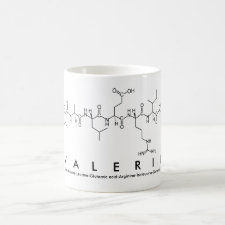
Authors: Combes A, Kadhirvel P, Bordron L, Pichon V
Article Title: Synthesis and Characterization of Molecularly Imprinted Polymers for the Selective Extraction of Carbamazepine and Analogs from Human Urine Samples.
Publication date: 2019
Journal: Chromatographia
Volume: 82
Issue: (1)
Page numbers: 287-295.
DOI: 10.1007/s10337-018-3680-4
Abstract: Two molecularly imprinted polymers (MIPs) were synthesized according to a previous work from our group dealing with the extraction of carbamazepine from environmental water. The potential of these MIPs, which differ in the nature of the monomer used for their synthesis, to selectively extract the drugs carbamazepine and oxcarbazepine and the metabolite 10,11-epoxycarbamazepine was first studied in spiked pure water, and high selectivity was obtained with both MIPs for the three target molecules in this pure medium. This selectivity was maintained when applying one of the MIPs to urine samples. Indeed, extraction recoveries were higher than 82% on the MIP and lower than 20% on the corresponding non-imprinted polymer used as a control. The repeatability of the extraction procedure applied to urine was also demonstrated, with relative standard deviation (RSD) below 20% for extraction recoveries of the three targets at a spiking level of 20 ng L-1. Limits of quantification between 1 and 7 ng L-1 were determined for urine samples using the MIP as extraction sorbent combined with LC-MS analysis. The potential of the MIP was compared to that of the Oasis HLB sorbent. This study shows that the MIP constitutes a powerful tool for avoiding matrix effects encountered in the quantification of the target molecules in urine samples extracted on Oasis HLB
Template and target information: carbamazepine, oxcarbazepine, 10,11-epoxycarbamazepine
Author keywords: Molecularly imprinted polymers, Carbamazepine, Oxcarbazepine, Metabolite, urine, LC-MS analysis



Join the Society for Molecular Imprinting

New items RSS feed
Sign-up for e-mail updates:
Choose between receiving an occasional newsletter or more frequent e-mail alerts.
Click here to go to the sign-up page.
Is your name elemental or peptidic? Enter your name and find out by clicking either of the buttons below!
Other products you may like:
 MIPdatabase
MIPdatabase









